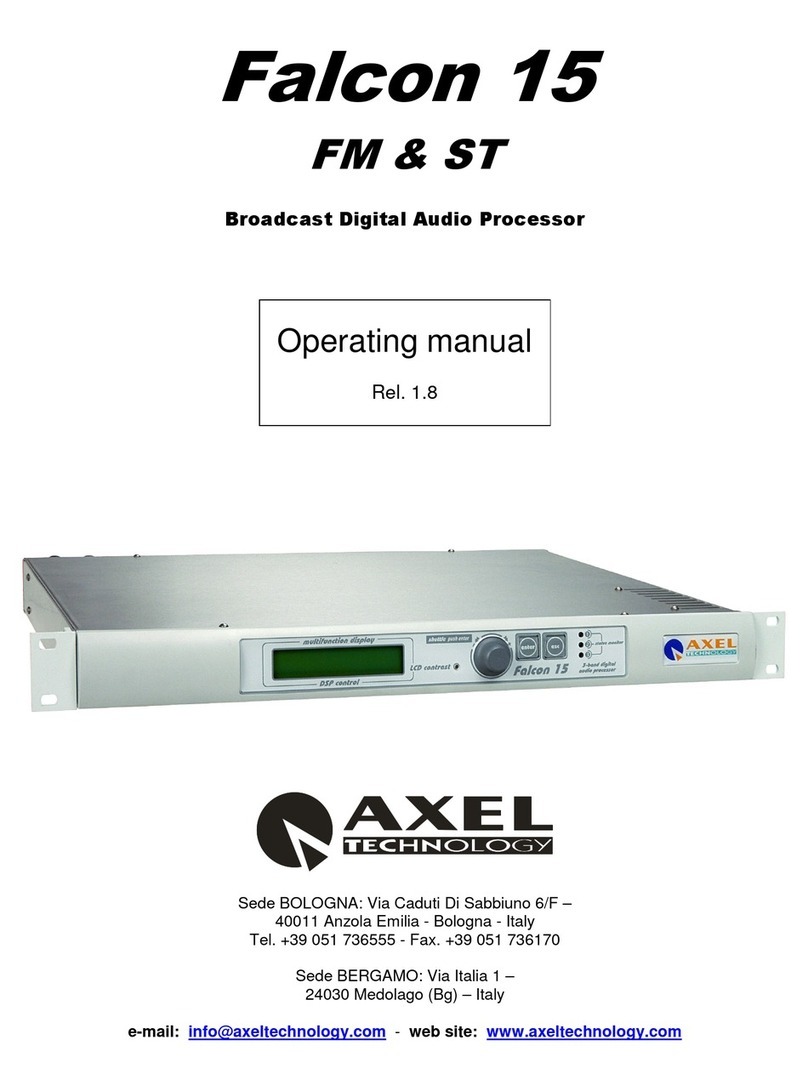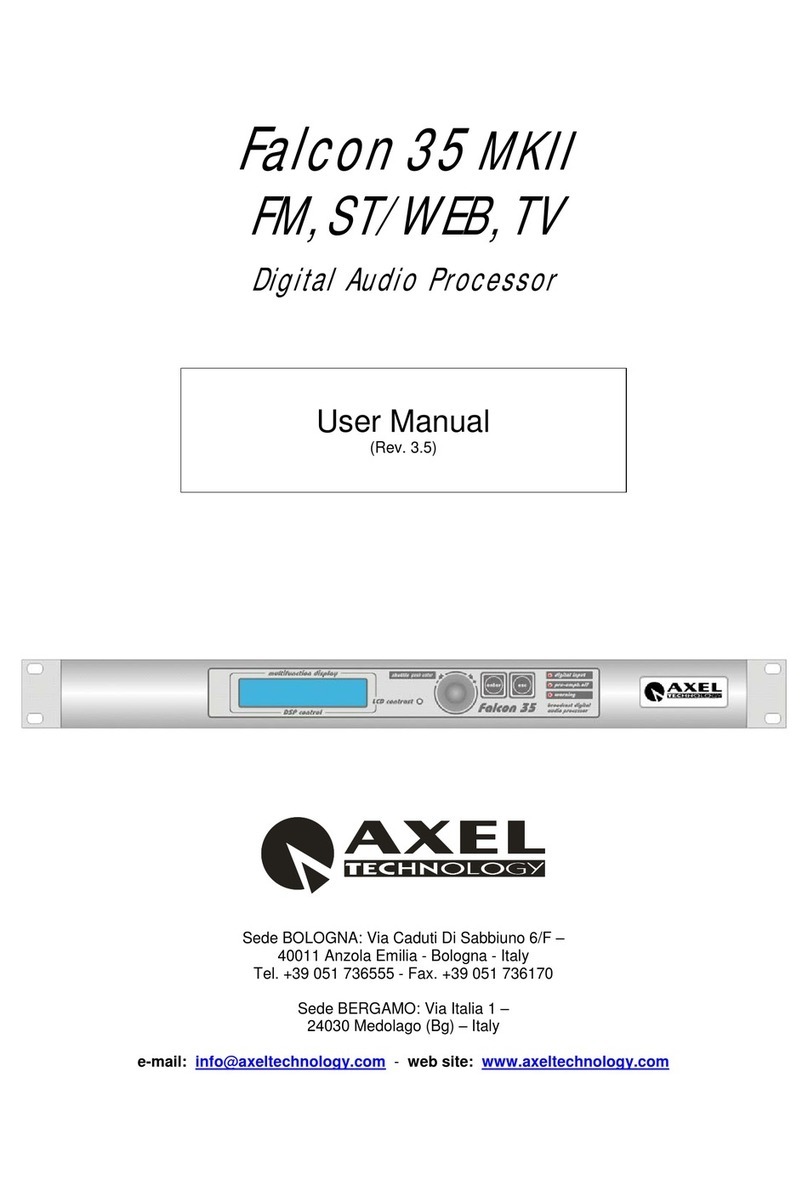TABLE OF CONTENTS
ENG
Pag. 5
2 TABLE OF CONTENTS
1
FOREWORD.........................................................................................................................................3
2
TABLE OF CONTENTS........................................................................................................................5
3
INTRODUCTION...................................................................................................................................6
3.1
APPROACHING
AN
FM
AUDIO
PROCESSOR..........................................................................................8
4
INSTALLATION CONSIDERATIONS ...................................................................................................9
5
BLOCK DIAGRAM ............................................................................................................................. 10
6
SAFETY WARNINGS......................................................................................................................... 11
7
FOREWORD....................................................................................................................................... 12
8
SAFETY WARNINGS......................................................................................................................... 13
9
CONSIGNES DE SÉCURITÉ IMPORTANTES.................................................................................... 15
10
ISTRUZIONI IMPORTANTI PER LA SICUREZZA........................................................................... 17
11
WICHTIGE SICHERHEITSHINWEISE............................................................................................. 19
12
INSTRUCCIONES IMPORTANTES DE SEGURIDAD..................................................................... 21
13
UNPACKING AND INSPECTION.................................................................................................... 23
14
FIRST INSTALLATION RECOMMENDATIONS.............................................................................. 24
14.1
POWER
SUPPLY
CABLE .........................................................................................................................24
14.2
AC
MAINS
VOLTAGE
SETTING
(230
V
/
115
V).....................................................................................24
14.3
FUSE
REPLACEMENT.............................................................................................................................25
14.4
PROTECTION
AGAINST
LIGHTNING ....................................................................................................25
14.5
VENTILATION .........................................................................................................................................26
15
AUDIO AND MPX GENERAL SETTINGS ....................................................................................... 27
15.1
AUDIO
INPUT
IMPEDANCE....................................................................................................................27
15.2
MPX
OUTPUT
SETTINGS........................................................................................................................28
16
GENERAL DESCRIPTION.............................................................................................................. 30
16.1
REAR
PANEL
VIEW.................................................................................................................................30
16.2
FRONT
PANEL
SOCKETS
AND
SIGNALLINGS .....................................................................................32
17
AUDIO I/O WIRING......................................................................................................................... 33
17.1
ANALOG
AUDIO
INPUT..........................................................................................................................33
17.2
ANALOG
AUDIO
OUTPUT ......................................................................................................................33
17.3
AUDIO
CABLING.....................................................................................................................................34
17.4
DIGITAL
AUDIO
INPUT...........................................................................................................................34
10.2.1
Converting between AES/EBU and S/PDIF interfaces..........................................................................34
17.5
DIGITAL
AUDIO
OUTPUT.......................................................................................................................34
17.6
DIGITAL
AUDIO
SYNCHRONIZATION
INTERFACE............................................................................35
18
COMMUNICATION PORTS, AUDIO JACK AND GPI/O WIRING.................................................... 36
18.1
SERIAL
PORT ...........................................................................................................................................36
18.2
USB
PORTS...............................................................................................................................................37
10.2.1
INSTALLING USB DRIVERS ..............................................................................................................37
18.3
ETHERNET
PORT*...................................................................................................................................39
18.4
GP
INPUT
INTERFACE ............................................................................................................................40
18.5
GP
OUTPUT
INTERFACE.........................................................................................................................42
18.6
FRONT
HEADPHONE
SOCKET...............................................................................................................43
18.7
MPX
AND
AUX
CONNECTIONS.............................................................................................................44
19
INSTALLING THE REMOTE CONTROL SOFTWARE.................................................................... 45





























